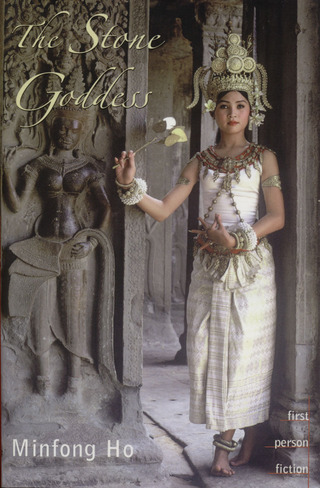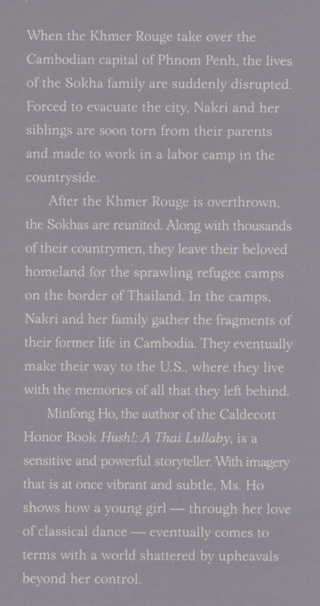The Stone Goddess


Editorial Reviews
From School Library Journal
Grade 6-10-Learning the graceful motions and steps that are part of classical Cambodian dance, 12-year-old Nakri has always followed in her older sister's footsteps. When the Khmer Rouge captures Phnom Penh and the Sokha family is forced to flee, she continues to cling to Teeda for companionship and strength, first in her grandparents' village, from which her father is taken, and then in the camp where she, her sister, and her brother do forced labor. Three years later, when the Vietnamese take over, only Nakri and her brother make their way back to the village where her mother and baby brother have barely survived. With little hope of returning to the deserted capital city, the family travels through the land-mine infested jungle to the Thai border. Through her father's past connections with an American, they find sponsors and come to the United States. This moving, first-person account rings true, both to Cambodian history and to the immigrant experience. The story is steeped in imagery from classical Cambodian dance, and the language is calm and rhythmic. Nakri and Teeda are clearly drawn, a pair of sisters both accomplished and determined. The older girl's dream was to dance the role of Mekhala, a goddess who triumphed over an ogre and won a crystal sphere by collecting a glassful of dew, drop by drop. So, too, bit by bit, day by day, Nakri and her family do the small things that, taken together, make possible their survival and success in their new world. This hopeful story, a vivid picture of Cambodia in the 1970s, is a welcome addition to a growing body of excellent literature about that part of the world for middle-school readers.
Kathleen Isaacs, Edmund Burke School, Washington, DC
Copyright 2003 Reed Business Information, Inc.
From Booklist
Gr. 6-9. When the Khmer Rouge takes over Cambodia, the Sokha family flees Phnom Penh along with thousands of other city dwellers. Nakri, almost 13, winds up in a brutal labor camp along with older siblings Teeda and Boran. Trained as a classical dancer, Teeda nurses Nakri through an illness and inspires her with her dedication to dance. Only Nakri and Boran survive the camp, rejoining the remnants of their family who journey to a refugee camp on Thailand's border. Eventually they immigrate to the U.S., where Nakri begins a confusing new life. It is dance that ties the story together, as Nakri prepares to follow in her sister's footsteps in her new country. Nakri's first-person account includes a great deal of cultural information that American readers need, but this slows the narrative and diminishes the emotional impact. Although it lacks suspense, this is a compassionate portrait of a young Cambodian refugee that will also supplement social studies units. Linda Perkins
Copyright © American Library Association. All rights reserved
Card catalog description
After the Communists take over Cambodia and her family is torn from their city life, twelve-year-old Nakri and her older sister attempt to maintain their hope as well as their classical dancing skills in the midst of their struggle to survive.
Product Description:
When Sophy and her older siblings are ripped away from their family by the cruel Khmer Rouge and sent to work in a children's labor camp, Sophy bears witness to innumerable tragedies, paying too dear a price. After the Vietnamese army liberates Cambodia, Sophy returns to her mother's village, where they decide to seek refuge in America. Upon arriving in America, Sophy struggles to adjust to life in a completely new and different society, but she is caught up in the memories of all that she left behind.